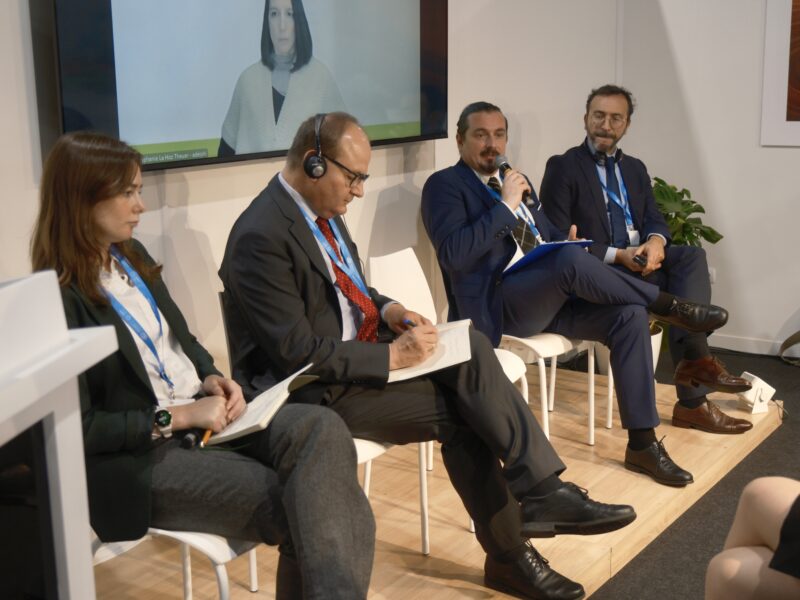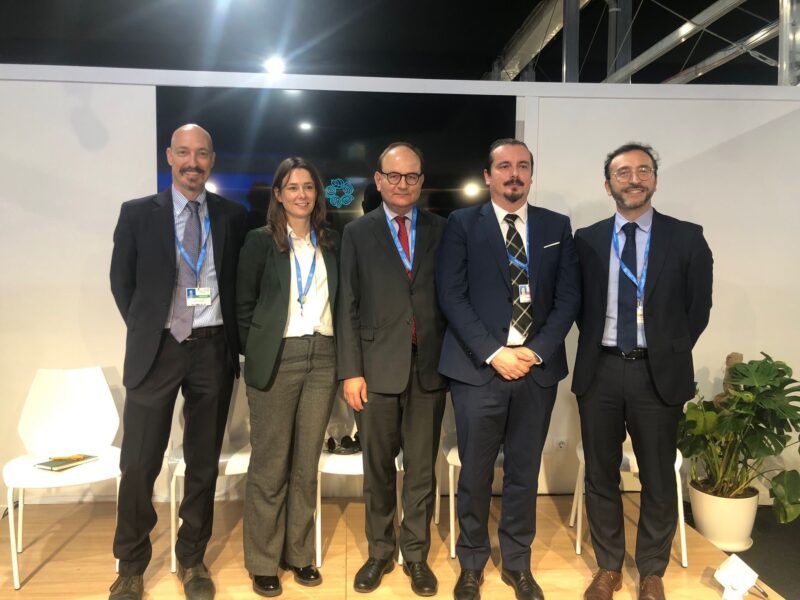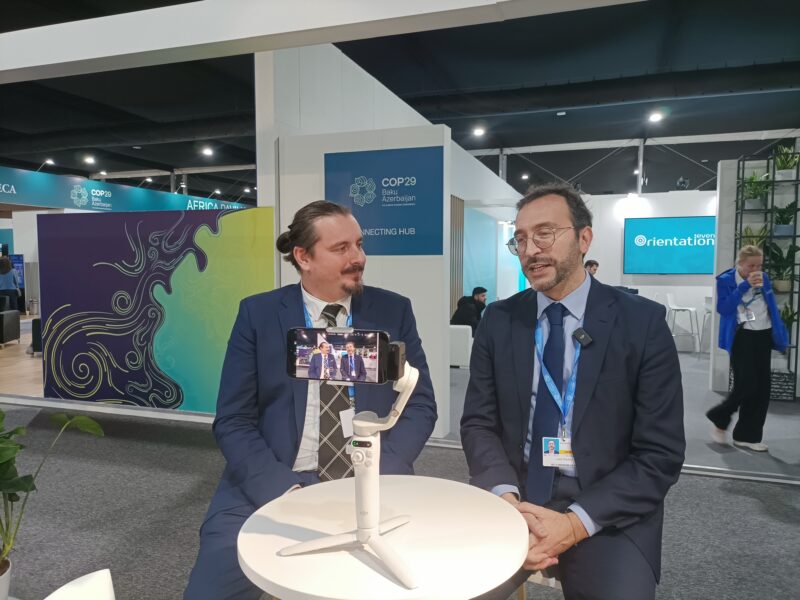First day of CAKE’s participation at COP29
The first day of CAKE’s participation at COP29 (12 November 2024), Robert Jeszke, Deputy Director for Emissions Management at IOŚ-PIB, KOBIZE and CAKE CEO made an intervention as a panelist in the side event “Can emissions trading promote carbon removals?” in the Italian Pavilion organised by EUI and ICAP .
Robert Jeszke shared his vision of how EU climate policy should be modified to integrate carbon removals into policy measures in the most effective and efficient way to achieve the highest possible benefits. He recommended the introduction of carbon dioxide removal units (CDRs) into the EU ETS, which seems necessary in the context of the EU’s 2050 climate neutrality target, the energy transition and the fact that the cap on allowances in the EU ETS market will be reached around 2040, leaving hard-to-abate emissions in the system. The system therefore needs negative emissions such as direct carbon capture and storage (DACCS) or bioenergy with carbon capture and storage (BECCS). This could be seen as complementary to emission reductions in sectors with very high marginal costs.
Discussing questions of tackling the challenges of integrity, permanence and mitigation deterrence when, Robert Jeszke suggested that there are three basic options for including removals in the EU ETS:
- Full integration of removals with the EU ETS what means making CDR units equal to EUA allowances. CRDs could then be used within the EU ETS, i.e. held in reserve and added to the auction pool if the situation required it.
- Creating a separate system for CDR units and combining it with the EU ETS – e.g. by introducing a separate removal target, where CDR units would be directed to industrial sectors that have exhausted all other possibilities to reduce their emissions.
- The EU ETS and the market for removals remain separate (EU ETS does not use any CRD).
He pointed out that according to CAKE/KOBiZE, the best option of the three above would be to directly include CDR units in the EU ETS. Establishing a European Central Carbon Bank (ECCB) with decision-making powers is then recommended. Such an independent institution could play a dual role, managing not only the inclusion of CDRs in the EU ETS, but also the entire supply for EUAs, stabilizing EUA prices and ensuring market liquidity. Finally, the ECCB could replace existing EU ETS stabilization mechanisms, such as the MSR (Market Stability Reserve) and Article 29a of the EU ETS Directive with a more flexibility and to simplify the overall system. Moreover, the ECCB could enhance transparency in EU ETS operations, like the ECB in finance sector.
During his intervention Robert also pointed out that ECCB could generate money by selling CDR units on the market, and the funds obtained in this way could be used for specific purposes, e.g. for the energy transformation in the EU or support also hard to abate sectors. CDR units could be included in both ETS1, ETS2 and non-ETS sectors and could possibly be linked in some way to other systems or offsets outside the EU. This would allow for more flexible integration of these mechanisms.

 Reset ustawień
Reset ustawień Kontrast
Kontrast Widok
Widok Czytelność
Czytelność Czcionka
Czcionka Znaki
Znaki Interlinia
Interlinia Słowa
Słowa Akapity
Akapity Deklaracja dostępności
Deklaracja dostępności












